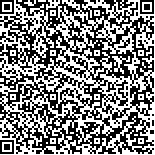| 引用本文: | 曲成刚,曹喜滨,张泽旭.人工势场和虚拟领航者结合的多智能体编队[J].哈尔滨工业大学学报,2014,46(5):1.DOI:10.11918/j.issn.0367-6234.2014.05.001 |
| QU Chenggang,CAO Xibin,ZHANG Zexu.Multi-agent system formation integrating virtual leaders into artificial potentials[J].Journal of Harbin Institute of Technology,2014,46(5):1.DOI:10.11918/j.issn.0367-6234.2014.05.001 |
|
| 摘要: |
| 针对多智能体编队控制中的无碰撞、稳定队形保持和智能调整等问题,提出一种将人工势场和虚拟领航者相结合的多智能体编队控制方法.首先,利用人工势场定义智能体之间的相互作用力和期望距离;其次,由虚拟领航者固定智能体之间的方位角,并通过增加虚拟领航者的数量和分布位置在人工势场中控制群组的队形和指挥群组的运动;最后,利用系统的动能和人工势能构造的李亚普诺夫函数证明了多智能体编队系统的稳定性.仿真实验结果验证了本文提出算法的有效性,可实现无碰撞、稳定地保持和调整智能体系统的编队队形. |
| 关键词: 人工势场 虚拟领航者 多智能体系统 协同控制 |
| DOI:10.11918/j.issn.0367-6234.2014.05.001 |
| 分类号:V448.22 |
| 基金项目:国家自然科学基金资助项目(61374213),装备预研共用技术基金资助项目(9140A04030113HT01049). |
|
| Multi-agent system formation integrating virtual leaders into artificial potentials |
|
QU Chenggang1, CAO Xibin1, ZHANG Zexu2
|
|
(1. Research Institute of Satellite Technology, Harbin Institute of Technology, 150080 Harbin, China; 2. Deep Space Exploration Research Center, Harbin Institute of Technology, 150080 Harbin, China)
|
| Abstract: |
| To solve the problems of collision between neighboring agents, a formation control algorithm is presented for multi-agent systems integrating virtual leaders into artificial potentials to keep and adjust formation. Firstly, the interaction forces and expectation distances between neighboring agents are determined by artificial potentials. Then, the formation and the motion direction of the group are controlled in the artificial potentials proposed by means of the amount and distribution locations of virtual leaders. Finally, the approach provides a construction for a Lyapunov function to prove stability of the formation systems using the system kinetic energy and the artificial potential energy. Simulation results show that the controller is effective and can keep or change formation configuration rapidly, stably and exactly with no collision. |
| Key words: artificial potentials virtual leaders multi-agent system cooperative control |







